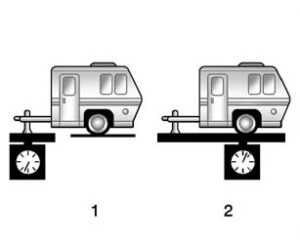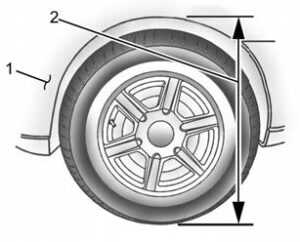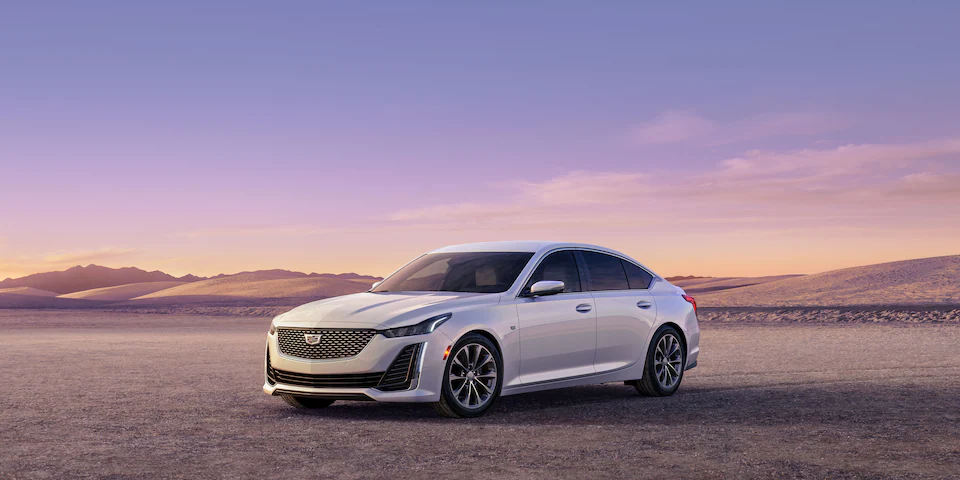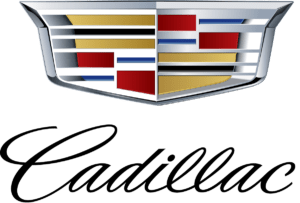Cadillac CT5 2023 Fuel and Conversions and Add-Ons
The 2023 Cadillac CT5 is a sophisticated and high-end sedan that blends comfort, style, and performance. In terms of fuel, this model is mostly made to run on petrol. Its different engine choices offer a good balance of power and fuel efficiency. As of my most recent update in January 2022, the CT5 doesn’t come in an electric or hybrid version. However, its gasoline-powered engines get good gas mileage ratings. People who are interested in alternative fuels like E85 or CNG may be able to make changes if they have the right tools and professional help. However, it’s important to make sure that these conversions are safe and possible. Additionally, the CT5 can be customised through a variety of add-ons, such as performance upgrades, towing packages, roof racks, and advanced safety features, which let drivers make their car fit their specific wants and tastes. The 2023 Cadillac CT5 gives you the freedom to customise and improve your driving experience, whether you want better speed, utility, or safety.
2023 Cadillac Escalade Specs, Price, Features, Mileage and Torque
Fuel
Top Tier Fuel
GM recommends the use of TOP TIER Detergent Gasoline to keep the engine clean, reduce engine deposits, and maintain optimal vehicle performance. Look for the TOP TIER Logo or see www.toptiergas.com for a list of TOP TIER Detergent Gasoline marketers and applicable countries.
Recommended Fuel
Regular unleaded gasoline meeting ASTM specification D4814 with a posted octane rating (R+M)/2 of 87 or greater is recommended. Do not use gasoline with a posted octane rating of less than 87, as this will result in reduced performance and driveability. If heavy knocking is heard when using gasoline rated at 87 or greater, the engine needs service. Do not use any fuel labeled E85 or FlexFuel. Do not use gasoline with ethanol levels greater than 15% by volume.
Prohibited Fuels
Caution
Do not use fuels with any of the following conditions; doing so may damage the vehicle and void its warranty:
- For vehicles that are not FlexFuel, fuel labelled greater than 15% ethanol by volume, such as mid-level ethanol blends (16–50% ethanol), E85, or FlexFuel.
- Fuel with any amount of methanol, methylal, ferrocene, and aniline. These fuels can corrode metal fuel system parts or damage plastic and rubber parts.
- Fuel-containing metals such as methylcyclopentadienyl manganese tricarbonyl (MMT), can damage the emissions control system and spark plugs.
- Fuel with a posted octane rating of less than the recommended fuel. Using this fuel will lower fuel economy and performance, and may decrease the life of the emissions catalyst.
Fuels in Foreign Countries
2023 Cadillac CT5 fuel type
The U.S., Canada, and Mexico post fuel octane ratings in the anti-knock index (AKI). For fuel not to use in a foreign country, see Prohibited Fuels 0 275.
Fuel Additives
TOP TIER Detergent Gasoline is highly recommended for use with your vehicle. If your country does not have TOP TIER Detergent Gasoline, add ACDelco Fuel System Treatment Plus−Gasoline to the vehicle’s gasoline fuel tank at every oil
change or 15 000 km (9,000 mi), whichever occurs first. TOP TIER Detergent Gasoline and ACDelco Fuel System Treatment Plus Gasoline will help keep your vehicle’s engine fuel deposit free and performing optimally.
Filling the Tank
An arrow on the fuel gauge indicates which side of the vehicle the fuel door is on. See Fuel Gauge 98.
Warning
Fuel vapors and fuel fires burn violently and can cause injury or death.
Follow these guidelines to help avoid injuries to you and others:
- Read and follow all the instructions on the fuel pump island.
- Turn off the engine when refueling.
- Keep sparks, flames, and smoking materials away from fuel.
- Do not leave the fuel pump unattended.
- Avoid using electronic devices while refueling.. Do not re-enter the vehicle while pumping fuel.
Keep children away from the fuel pump and never let children pump fuel. - Before touching the fill nozzle, touch a metallic object to discharge static electricity from your body.
- Fuel can spray out if the fill nozzle is inserted too quickly. This spray can happen if the tank is nearly full, and is more likely in hot weather. Insert the fill nozzle slowly and wait for any hiss noise to stop before beginning to flow fuel.
If equipped, the fuel door unlocks when the vehicle doors are unlocked. See Remote Key Operation 0 7.
To open the fuel door, push and release the rearward center edge of the door.
The capless refueling system does not have a fuel cap. Fully insert and latch the fill nozzle, then begin fueling.
Warning
Overfilling the fuel tank by more than three clicks of a standard fill nozzle may cause:
- Vehicle performance issues, including engine stalling and damage to the fuel system
- Fuel spills.
- Under certain conditions, fuel fires.
Be careful not to spill fuel. Wait five seconds after you have finished pumping before removing the fill nozzle. Clean fuel from painted surfaces as soon as possible. See Exterior Care 0 356 Push the fuel door closed until it latches
Warning
If a fire starts while you are refuelling, do not remove the fill nozzle. Shut off the flow of fuel by shutting off the pump or by notifying the station attendant. Leave the area immediately.
Filling the Tank with a Portable Fuel Container
If the vehicle runs out of fuel and must be filled from a portable fuel container:
- Locate the capless funnel adapter from the rear cargo area under the load floor.
- Insert and latch the funnel into the capless fuel system.
Warning
Attempting to refuel from a portable fuel container without using the funnel adapter may cause fuel spillage and damage the capless fuel system. This could cause a fire. You or others could be badly burned and the vehicle could be damaged. - Remove and clean the funnel adapter and return it to the storage location.
Filling a Portable Fuel Container
Warning
Never fill a portable fuel container while it is in the vehicle. Static electricity discharge from the container can ignite the fuel vapor. You or others could be badly burned and the vehicle could be damaged. To help avoid injury to you and others:
- Dispense fuel only into approved containers.
- Do not fill a container while it is inside a vehicle, in a vehicle’s trunk, in a pickup bed, or on any surface other than the ground.
- Bring the fill nozzle in contact with the inside of the fill opening before operating the nozzle. Maintain contact until filling is complete.
- Keep sparks, flames, and smoking materials away from fuel.
- Avoid using electronic devices while pumping fuel.
Trailer Towing
General Towing Information
Only use towing equipment that has been designed for the vehicle. Contact your dealer or trailering dealer for assistance with preparing the vehicle to tow a trailer. Read the entire section before towing a trailer. To tow a disabled vehicle, see Transporting a Disabled Vehicle 0 354. To tow the vehicle behind another vehicle such as a motor home, see Recreational Vehicle Towing356.
When towing with the 2.0L L4 engine, only use unleaded gasoline with an octane rating of 89 or higher. Using gasoline with a lower octane rating while towing may damage the engine and may not be covered by the vehicle warranty. See Recommended Fuel (LSY 2.0L L4 Turbo Engine) 0 280 or Recommended Fuel (L3B 2.7L L4 Turbo and LF4 3.6L V6 Twin Turbo Engines) 0 280.
Driving Characteristics and Towing Tips
Warning
You can lose control when towing a trailer if the correct equipment is not used or the vehicle is not driven properly. For example, if the trailer is too heavy or the trailer brakes are inadequate for the load, the vehicle may not stop as expected. You and others could be seriously injured. The vehicle may also be damaged, and the repairs would not be covered by the vehicle warranty. Pull a trailer only if all the steps in this section have been followed. Ask your dealer for advice and information about towing a trailer with the vehicle.
Driving with a Trailer
Trailering is different than just driving the vehicle by itself. Trailering means changes in handling, acceleration, braking, durability, and fuel economy. Successful, safe trailering takes the correct equipment, and it has to be used properly.
The following information has many time-tested, important trailering tips and safety rules. Many of these are important for your safety and that of your passengers. Read this section carefully before pulling a trailer.
When towing a trailer:
- Become familiar with and follow all state and local laws that apply to trailers These requirements vary from state to state.
- State laws may require the use of extended side view mirrors. If your visibility is limited or restricted while towing, install extended side view mirrors, even if not required.
- Do not tow a trailer during the first 800 km (500 mi) of vehicle use to prevent damage to the engine, axle, or other parts.
- GM recommends performing an oil change to the vehicle before heavy
- Do not drive over 80 km/h (50 mph) and do not make starts at full throttle during the first 800 km (500 mi) of trailer Vehicles can tow in D (Drive). Tow/Haul Mode is recommended for heavier See Driver Mode Control 0 220. If the transmission downshifts too often, a lower gear may be selected using Manual Mode. See Manual Mode 219.
If equipped, the following driver assistance features should be turned off when towing a trailer:
- Adaptive Cruise Control (ACC)
- Super Cruise Control
- Park Assist
- Automatic Parking Assist (APA)
- Reverse Automatic Braking (RAB)
If equipped, the following driver assistance features should be turned to alert or off when towing a trailer:
- Automatic Emergency Braking (AEB)
- Intelligent Brake Assist (IBA)
- Front Pedestrian Braking (FPB)
If equipped with Lane Change Alert (LCA), the LCA detection zones that extend back from the side of the vehicle do not move further back when a trailer is towed. Use caution while changing lanes when towing a trailer.
If equipped with Rear Cross Traffic Alert
(RCTA), use caution while backing up when towing a trailer, as the RCTA detection zones that extend out from the back of the vehicle do not move further back when a trailer is towed.
Warning
To prevent serious injury or death from carbon monoxide (CO), when towing a trailer:
- Do not drive with the liftgate, trunk/hatch, or rear-most window open.
- Fully open the air outlets on or under the instrument panel.
- Adjust the climate control system to a setting that brings in only outside air. See “Climate Control Systems” in the Index.
For more information about carbon monoxide, see Engine Exhaust 214.
Towing a trailer requires experience. The combination of the vehicle and trailer is longer and not as responsive as the vehicle itself. Get used to the handling and braking of the combination by driving on a level road surface before driving on public roads.
The trailer structure, the tires, and the brakes must be all be rated to carry the intended cargo. Inadequate trailer equipment can cause the combination to operate in an unexpected or unsafe manner. Before driving, inspect all trailer hitch parts and attachments, safety chains, electrical connectors, lamps, tires, and mirrors. See Towing Equipment 0 287. If the trailer has electric brakes, start the combination moving and then manually apply the trailer brake controller to check the trailer brakes work. During the trip, occasionally check that the cargo and trailer are secure and that the lamps and any trailer brakes are working.
Towing with a Stability Control System
When towing, the stability control system might be heard. The system reacts to vehicle movement caused by the trailer, which mainly occurs during cornering. This is normal when towing heavier trailers.
Following Distance
Stay at least twice as far behind the vehicle ahead as you would when driving without a trailer. This can help to avoid heavy braking and sudden turns.
Passing
More passing distance is needed when towing a trailer. The combination of the vehicle and trailer will not accelerate as quickly and is much longer than the vehicle alone. It is necessary to go much farther beyond the passed vehicle before returning to the lane. Pass on level roadways. Avoid passing on hills if possible.
Backing Up
Hold the bottom of the steering wheel with one hand. To move the trailer to the left, move that hand to the left. To move the trailer to the right, move that hand to the right. Always back up slowly and, if possible, have someone guide you.
Making Turns
Caution
Turn more slowly and make wider arcs when towing a trailer to prevent damage to your vehicle. Making very sharp turns could cause the trailer to contact the vehicle.
Make wider turns than normal when towing, so the trailer will not go over soft shoulders, over curbs, or strike road signs, trees, or other objects. Always signal turns well in advance. Do not steer or brake suddenly.
Driving on Grades
Reduce speed and shift to a lower gear before starting down a long or steep downhill grade. If the transmission is not shifted down, the brakes may overheat and result in reduced braking efficiency. The vehicle can tow in D (Drive). Shift the transmission to a lower gear if the transmission shifts too often under heavy loads and/or hilly conditions.
When towing at higher altitudes, engine coolant will boil at a lower temperature than at lower altitudes. If the engine is turned off immediately after towing at high altitude on steep uphill grades, the vehicle could show signs similar to engine overheating. To avoid this, let the engine run, preferably on level ground, with the transmission in P (Park) for a few minutes before turning the engine off. If the overheat warning comes on, see Engine Overheating 0 310.
Parking on Hills
Warning
To prevent serious injury or death, always park your vehicle and trailer on a level surface when possible.
- Press the brake pedal, but do not shift into P (Park) yet. Turn the wheels into the curb if facing downhill or into traffic if facing uphill.
- Have someone place chocks under the trailer wheels.
- When the wheel chocks are in place, gradually release the brake pedal to allow the chocks to absorb the load of the trailer.
- Reapply the brake Then apply the parking brake and shift into P (Park).
- Release the brake
Leaving After Parking on a Hill
- Apply and hold the brake pedal:
- Start the
- Shift into the desired
- Release the parking
- Let up on the brake
- Drive slowly until the trailer is clear of the chocks.
- Stop and have someone pick up and store the chocks.
Maintenance When Trailer Towing
The vehicle needs service more often when used to tow trailers. See Maintenance Schedule 0 339. It is especially important to check the engine oil, axle lubricant, belts, cooling system, and brake system before and during each trip. Check periodically that all nuts and bolts on the trailer hitch are tight.
Engine Cooling When Trailer Towing
The cooling system may temporarily overheat during severe operating conditions. See Engine Overheating 0 310.
Trailer Towing
Caution
Towing a trailer improperly can damage the vehicle and result in costly repairs not covered by the vehicle warranty. To tow a trailer correctly, follow the directions in this section and see your dealer for important information about towing a trailer with the vehicle.
Trailer Weight
Warning
Never exceed the towing capacity for your vehicle. Safe trailering requires monitoring the weight, speed, altitude, road grades, outside temperature, dimensions of the front of the trailer, and how frequently the vehicle is used to tow a trailer.
Trailer Weight Ratings
When towing a trailer, the weight of the loaded vehicle and trailer must be within the weight ratings for the vehicle.
- Gross Combined Weight Rating (GCWR)
- Gross Vehicle Weight Rating (GVWR)
- Maximum Trailer Weight Rating
- Maximum Trailer Tongue Weight Rating
- Gross Axle Weight Rating-Rear (GAWR-RR)
See “Weight-Distributing Hitch Adjustment” under Towing Equipment 0 255 to determine if equalizer bars are required to obtain the maximum trailer weight rating. See “Trailer Brakes” under Towing Equipment 0 255 to determine if brakes are required based on the trailer weight.
The only way to be sure the weight is not exceeding any of these ratings is to weigh the tow vehicle and trailer combination, fully loaded for the trip, getting individual weights for each of these items.
Warning
You and others could be seriously injured or killed if the trailer is too heavy or the trailer brakes are inadequate for the load. The vehicle may be damaged, and the repairs would not be covered by the vehicle warranty. Only tow a trailer if all the steps in this section have been followed. Ask your dealer for advice and information about towing a trailer Gross Combined Weight Rating (GCWR) GCWR is the total allowable weight of the completely loaded vehicle and trailer including any fuel, passengers, cargo, equipment, and accessories. Do not exceed the GCWR for your vehicle. The GCWR for the vehicle is on the Tow Rating Chart following.
Gross Vehicle Weight Rating (GVWR)
For information about the vehicle’s maximum load capacity, see Vehicle Load Limits 0 200. When calculating the GVWR with a trailer attached, the trailer tongue weight must be included as part of the weight the vehicle is carrying.
Maximum Trailer Tongue Weight Rating
The Maximum Trailer Tongue Weight Rating is the allowable trailer tongue weight that the vehicle can support. Do not exceed a maximum trailer tongue weight of 400 lbs. The trailer tongue weight contributes to the Gross Vehicle Weight (GVW). GVW includes the CURB WEIGHT of your vehicle, any passengers, cargo, equipment and the trailer tongue weight. Vehicle options, passengers, cargo, and equipment reduce the maximum allowable tongue weight the vehicle can carry, which also reduces the maximum allowable trailer weight.
Trailer Load Balance
The correct trailer load balance must be maintained to ensure trailer stability. Incorrect load balance is a leading cause of trailer sway.
The trailer tongue weight (1) should be 10– 15% of the loaded trailer weight (2). Some specific trailer types, such as boat trailers, fall outside of this range. Always refer to the trailer owner’s manual for the recommended trailer tongue weight for each trailer. Never exceed the maximum loads for your vehicle, hitch, and trailer.
After loading the trailer, separately weigh the trailer and then the trailer tongue and calculate the trailer load balance percentage to see if the weights and distribution are appropriate for your vehicle. If the trailer weight is too high, it may be possible to transfer some of the cargo into your vehicle. If the trailer tongue weight is too high or too low, it may be possible to rearrange some of the cargo inside of the trailer.
Do not exceed the maximum allowable tongue weight for your vehicle. Use the shortest hitch extension available to position the hitch ball closer to your vehicle. This will help reduce the effect of the trailer tongue weight on the trailer hitch and the rear axle. If a cargo carrier is used in the trailer hitch receiver, choose a carrier that positions the load as close to the vehicle as possible. Make sure the total weight, including the carrier, is no more than half of the maximum allowable tongue weight for the vehicle or 227 kg (500 lb), whichever is less. Ask your dealer for trailering information or assistance.
Rear Gross Axle Weight Rating (GAWR-RR)
The GAWR-RR is the total weight that can be supported by the rear axle of the vehicle. Do not exceed the GAWR-RR for the vehicle, with the tow vehicle and trailer fully loaded for the trip including the weight of the trailer tongue. If using a weight-distributing hitch, do not exceed the GAWR-RR before applying the weight-distribution spring bars. For additional assistance with trailering or additional information, see your dealer.
Towing Equipment
Hitches
Always use the correct hitch equipment for your vehicle. Crosswinds, large trucks going by, and rough roads can affect the trailer and the hitch.
Proper hitch equipment for your vehicle helps maintain combination control. Many trailers can be towed using a weight-carrying hitch which has a coupler latched to the hitch ball, or a tow eye latched to a pintle hook. Other trailers may require a weight-distributing hitch that uses spring bars to distribute the trailer tongue weight between your vehicle and trailer axles. See “Trailer Tongue Weight” under Trailer Towing 0 252 or weight limits with various hitch types.
Never attach rental hitches or other bumper-type hitches. Only use frame-mounted hitches that do not attach to the bumper.
Always seal any holes in your vehicle if the trailer hitch is removed. If not sealed, dirt, water, and carbon monoxide (CO) from the exhaust may enter your vehicle. See Engine Exhaust 209.
- Upper Attachments
- Fasteners
To remove hitch cover, if equipped:
- Remove the two fasteners on the lower tabs (2).
- Pull the lower edge of the cover to about a 45-degree angle.
- Pull the cover downward to disengage the upper attachments (1).
To reinstall hitch cover:
- Hold cover at a 45 degree angle to the vehicle and push the upper tabs into the slots in the bumper.
- Push the bottom of the cover forward until the lower tabs line up with the lower slots (1).
- Snap the hitch cover into place by pushing the upper corners
- Reinstall the two fasteners on the lower tabs (2).
Consider using mechanical sway controls with any trailer. Ask a trailering professional about sway controls or refer to the trailer manufacturer’s recommendations and instructions.
Weight-Distributing Hitch Adjustment Upper Attachments

- Front of Vehicle
- Body-to-Ground Distance
Trailer Brakes
Loaded trailers over 450 kg (1,000 lb) must be equipped with brake systems and with brakes for each axle. Trailer braking equipment conforming to Canadian Standards Association (CSA) requirement CAN3-D313, or its equivalent, is recommended.
State or local regulations may require trailers to have their own braking system if the loaded weight of the trailer exceeds certain minimums that can vary from state to state. Read and follow the instructions for the trailer brakes so they are installed, adjusted, and maintained properly. Never attempt to tap into your vehicle’s hydraulic brake system. If you do, both the vehicle anti-lock brakes and the trailer brakes may not function, which could result in a crash.
Trailer Lamps
Always check all trailer lamps are working at the beginning of each trip, and periodically on longer trips.
Turn Signals When Towing a Trailer
When properly connected, the trailer turn signals will illuminate to indicate the vehicle is turning, changing lanes, or stopping.
When towing a trailer, the arrows on the instrument cluster will illuminate even if the trailer is not properly connected or the bulbs are burned out.
Conversions and Add-Ons
Add-On Electrical Equipment
Warning
The Data Link Connector (DLC) is used for vehicle service and Emission Inspection/Maintenance testing. See Malfunction Indicator Lamp (Check Engine Light) 0 100. A device connected to the DLC — such as an aftermarket fleet or driver-behavior tracking device — may interfere with vehicle systems. This could affect vehicle operation and cause a crash. Such devices may also access information stored in the vehicle’s systems.
Caution
Some electrical equipment can damage the vehicle or cause components to not work and would not be covered by the vehicle warranty. Always check with your dealer before adding electrical equipment. Add-on equipment can drain the vehicle’s 12-volt battery, even if the vehicle is not operating.
The vehicle has an airbag system. Before attempting to add anything electrical to the vehicle, see Servicing the Airbag-Equipped Vehicle60. and Adding Equipment to the Airbag-Equipped Vehicle60.
FAQ
The 2023 Cadillac CT5 typically runs on gasoline.
The fuel economy can vary depending on the engine and trim level, but it generally ranges from around 20 to 30 miles per gallon (MPG) in combined city and highway driving.
There was no hybrid or electric version of the 2023 Cadillac CT5. However, Cadillac’s lineup may have changed since then, so it’s a good idea to check the latest offerings from Cadillac.
Converting a vehicle to run on alternative fuels like E85 or CNG typically requires specialized equipment and modifications. It’s best to consult with a professional automotive technician to assess whether such a conversion is feasible and safe for your specific vehicle.
Aftermarket performance modifications, such as exhaust upgrades, tuning, and suspension enhancements, may be available for the 2023 Cadillac CT5. However, it’s essential to ensure that any modifications comply with local regulations and do not void the vehicle’s warranty.
Towing packages for the 2023 Cadillac CT5 may be available through Cadillac or authorized dealerships. These packages can include hitches, wiring, and other towing-related components.
The towing capacity can vary depending on the engine and configuration, but it’s typically around 1,000 to 1,500 pounds for the 2023 CT5.
Roof racks and roof boxes can often be added to the 2023 Cadillac CT5 to increase cargo-carrying capacity. These accessories are typically available through Cadillac or aftermarket suppliers.
Yes, some trim levels of the 2023 Cadillac CT5 may offer a sunroof or panoramic sunroof as an option.
Yes, the 2023 Cadillac CT5 is available with both rear-wheel drive (RWD) and all-wheel drive (AWD) configurations.
Aftermarket performance brake kits may be available for the 2023 Cadillac CT5 to improve braking performance. Be sure to choose components that are compatible with your vehicle’s specifications.
Many vehicles, including the Cadillac CT5, offer optional larger wheels or the ability to install custom rims for a personalized look. Check with your local dealership or authorized tire and rim shop for available options.
Some trim levels of the 2023 Cadillac CT5 may come equipped with advanced safety features, while others may offer them as optional packages. You can inquire with the dealership about the availability of these features for your specific trim.
Cadillac may offer upgraded sound systems and entertainment packages as optional features. These can include premium audio systems, larger touchscreen displays, and advanced infotainment features.
There are various aftermarket accessories available, such as organizers, cargo nets, and storage solutions, to help you maximize interior storage in the 2023 Cadillac CT5. You can explore these options through automotive accessory retailers.
What type of gasoline does the Cadillac CT5 require?
The Cadillac CT5 gas type typically requires premium unleaded gasoline with an octane rating of 91 or higher for optimal performance.
Useful Link
View Full User Guide: Cadillac CT5 2023 User Guide
Download Manuals: https://www.cadillac.com/support/vehicle/manuals-guides
2023 Cadillac Escalade Specs, Price, Features, Mileage and Torque


